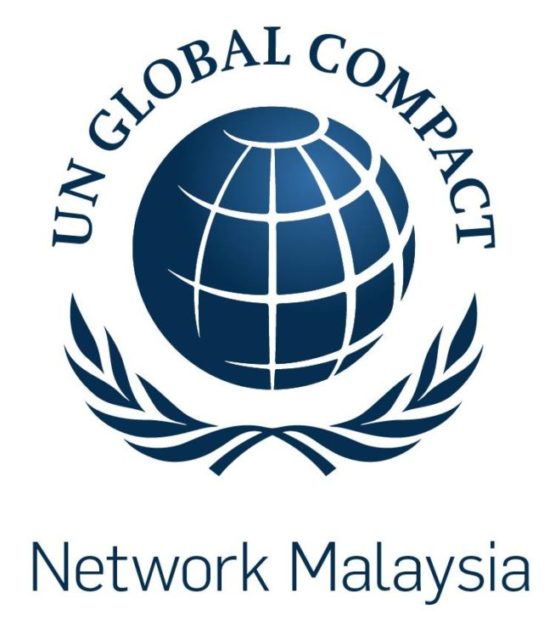The Role of Businesses in Ensuring Life Below Water
The Role of Businesses in Ensuring Life Below Water

(Article by UNGC)
Healthy oceans are critical for life on earth through their regulation of global climate and water systems, and through sustaining the natural resources that provide 17% of the global population’s animal protein intake. Many communities also rely on oceans for their livelihoods. The earth’s oceans are under ever increasing pressure from direct pollution and eutrophication, climate change, and fishing and aquaculture. Ocean plastic and debris are increasing rapidly; at this rate, it is estimated that there will be more plastic debris than fish in the world’s oceans by 2050, presenting a huge risk to ocean and human life. Ocean acidification can lead to weakening of the shells and skeletons of many marine species. Overfishing negatively impacts food production, the functioning of ecosystems, and biodiversity.
Businesses play a key role as responsible stewards of oceans, seas, and marine resources. Oceans underpin the global economy. Over 90% of the world’s trade is carried by sea, supporting more than USD$2.5 trillion of commercial activity every year. Maritime transport can impact ocean habitats by emitting exhaust, leaking chemicals and dumping waste into waters. Extractive activities including fishing, offshore drilling for oil and gas, and mineral mining can cause great damage to ocean environments if not managed sustainably. Land-based activities also generate by-products that are carried to oceans and disrupt marine ecosystems through pollution and eutrophication of habitats. All businesses have a responsibility to abide by environmental law and international treaties on the protection of marine ecosystems.
There is significant scope for business leadership on Goal 14. Yet today, Goal 14 is rarely identified as a priority for business action despite many businesses relying on maritime resources for inputs and transportation. Business leadership on Goal 14 requires first understanding the business link to oceans across end-to-end operations. Leading companies can then implement policies and practices to protect ocean ecosystems affected by their end-to-end operations.
State of Life Below Water in Malaysia
- Malaysia has an extensive coastline of 4,675km in total and a rich marine ecosystem with nearly 600 species of corals and over 2,000 species of fish. The country was supposed to set aside at least 10% of its coastal and marine environs as marine protected areas by 2020, however, it only managed to conserve 5.3% of coastal and marine areas in the same year. Thus, there are plans to gazette more new marine parks under the Fisheries Act 1985, as these parks are vital as breeding grounds for fish and other marine life, and for providing various important ecosystem services such as carbon sequestration, coastal protection and climate regulation.
- The overall number of visitors to Malaysia’s marine parks averages 650,000 annually, showing that the marine ecotourism sector in Malaysia has high potential. Malaysia’s success in managing marine parks has been recognised by the Coral Triangle Initiative – Pulau Tioman was highlighted as a prime example of a “large, effectively-managed site with regional ecological, governance and socioeconomic importance” through working with local communities (around 3500 residents)
- Marine plastic pollution has emerged as one of the most significant environmental threats to Malaysia. One of the government’s efforts to overcome this is through the Roadmap Towards Zero Single-use Plastics 2018–2030 that aims to abolish single-use plastic by 2030, in an effort to achieve a 22% recycling rate target in 2020, a 40% reduction of waste disposal into landfills and dumping sites, including reducing marine plastic leakages.
Do your actions satisfy leadership qualities?
1. Intentionality
- Is your company committed to supporting the achievement of Goal 14? Have you developed a holistic strategy that reflects this commitment, covering end-to-end operation and the wider community?
- Are you committed to learn from your actions and do you have processes in place to improve them accordingly?
- Is your strategy supported by the highest levels of management, including the Board of Directors.
2. Ambition
- Do your actions achieve long-term outcomes that greatly exceed those resulting from current industry practice?
- Are your actions aligned with what is needed to achieve Goal 14?
3. Consistency
- Is support for Goal 13 embedded across all organizational functions?
- Are staff and board incentives aligned with achieving Goal 14?
4. Collaboration
- Do you proactively look for opportunities to partner with Governments, UN agencies, suppliers, civil society organizations, industry peers and other stakeholders to inform how to advance Goal 14?
5. Accountability
- Do you publicly express your commitment to advance Goal 14?
- Do you identify, monitor, and report on impacts, including potentially adverse impacts?
- Do you mitigate risks associated with your action?
- Do you remediate negative impacts associated with this action?
- Do you engage stakeholders in a meaningful way?
Framework for Business Action
Business Action 1: Implement policies and practices to protect ocean ecosystems that are affected by business and supply chain activities
Companies have a responsibility to abide by national environmental standards. Leading companies go beyond this and set new benchmarks on pursuing growth without damaging oceans, seas, and marine resources. Where possible, they should do so through multi-stakeholder partnerships and standards. Leading companies implement ambitious policies and practices to protect natural ecosystems across multiple tiers of their supply chains. This can include supplier selection and working with strategic suppliers to help build their capacity to adhere to, and exceed, environmental standards.
Example Practice
A zero-waste grocery chain makes its stores completely free of packaging, requiring customers to bring their own recycled packaging materials in order to prevent plastic debris related to its operations from entering the oceans
Business Action 2: Research, develop, and deploy products, services, and business models which negate impacts on ocean ecosystems and contribute to their restoration
All companies have a responsibility to ensure that their existing products and services minimize impact on ocean ecosystems. Leading companies go beyond this and leverage their innovation capabilities to deliver solutions that negate impacts and/or contribute to the restoration of ocean ecosystems. This can comprise new products and services with much improved environmental performance, such as sustainable fisheries technologies or alternatives for fertilizers and other products for agricultural use that cause pollution run-off. It can also include business models that fundamentally alter the pressures on ocean ecosystems, such as alternatives for fish protein intake. These innovations can have applications throughout the value chain, from agricultural and the extraction of basic materials, through to consumption of products and services
Example Practice
A fishing equipment manufacturer designs and markets a zero bycatch ocean fishing net which includes lighted rings that allow small ocean life to escape nets intended to capture large fish
Business Action 3: Galvanize finance for the protection and further development of ocean ecosystems and water system flows
Companies in all sectors, from finance to industries with a direct impact on their environment, can play a role in allocating capital in a way that is commensurate with protecting and developing healthy oceans, seas, and marine resources. Companies with sufficient influence to affect the investment decisions of others can lead by galvanizing finance to support ocean ecosystem conservation, restoration, and development efforts, and build awareness among relevant stakeholders. They can identify funding gaps and focus particularly on regions that do not have the capacity to finance support for ocean ecosystems and water system flows so as to maximize positive impact. Companies can also engage policy makers and others in multi-stakeholder initiatives to eliminate harmful financial flows, such as investment in unsustainable fisheries or fisheries subsidies. They can also invest in training around sustainable practices in fisheries and aquaculture.
Example Practice
A group of food and restaurant companies partner with industry peers and civil society to advocate for the end of fisheries subsidies to end unsustainable fishing practices in ocean ecosystems
Business Action 4: Design and implement solutions to accurately value and respect natural capital, and drive wider adoption of these solutions
Companies can lead on the protection of life below water by designing and implementing solutions that can help integrate the full value of natural capital into decision making related to their end-to-end operations, and that are also replicable. Methods can include natural capital accounting and innovative methods for payments for ecosystem services. Leading companies make sure that these solutions gain traction by collaborating with Governments, suppliers and other stakeholders to build capacity. They also showcase their own solutions to protect ecosystems.
Example Practice
A private sector water utility incorporates natural capital accounting in all its assessments, financial accounts and strategy to ensure that protecting natural assets is incentivised at all levels of decision-making. It encourages companies across its value chain to do the same.
Maintaining healthy ocean environments is a fundamental precondition for businesses to operate in the long term, and addressing the current challenges provides a significant business opportunity. Global markets for ocean resources including energy, food, fresh water, minerals and recreation are large and growing, but a lack of sustainable products, processes and business models make many activities unsustainable. Technologies such as aquaponics, tidal energy, and energy efficient desalination can address this challenge while presenting significant opportunities to reap rewards from the sustainable use of ocean resources. Action on Goal 14 is closely linked to many Goals, including Goal 13 on climate action and to Goal 15 on life on land. Reaching the targets of Goal 14 will likewise require significant progress on Goal 12. The important role that the oceans play in providing food globally means that the success of Goal 2 on zero hunger requires that ocean biodiversity loss be halted. Oceans are also closely tied to Goal 6 on clean water and sanitation through their regulation of global climate and precipitation.



